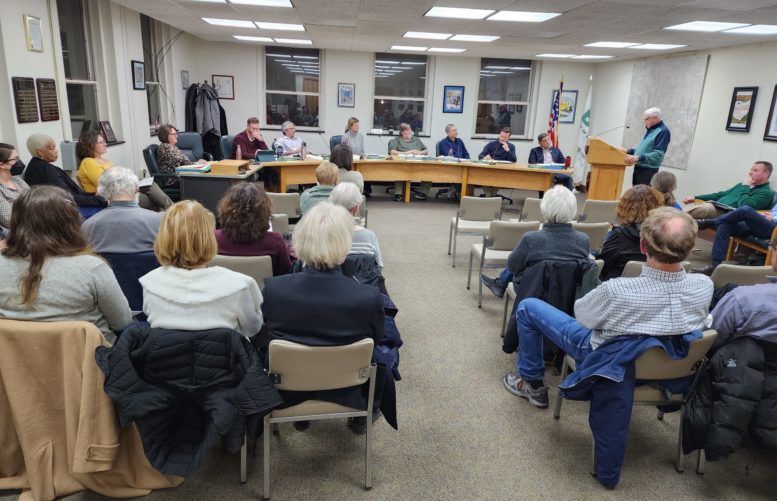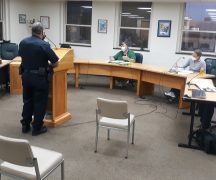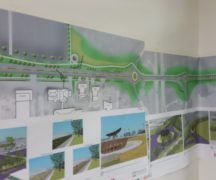By JAN LARSON McLAUGHLIN
BG Independent News
After decades of watching their neighborhoods deteriorate and feeling their concerns have been ignored, frustration boiled over from residents of older sections of Bowling Green at the City Council meeting Monday evening.
Some citizens had reached their limit.
“We are fighting for our lives,” said Christen Giblin, who asked that council consider the harm that may be caused by the city’s zoning code update.
“There are more rentals every year. Property values are going down,” Giblin said. “I hope you back us up. Otherwise I don’t know what a city council is for.”
The primary point of concern in the proposed zoning update is the new “pedestrian residential” zoning category that allows for greater housing density and certain small businesses in residential neighborhoods.
The proposed PR zoning would stretch from Poe Road to Napoleon Road, taking in several blocks on both sides of Main Street.
The goal of the PR zoning category is to create walkable neighborhoods.
But Giblin, who lives on North Prospect Street, said all it will do is further degrade their neighborhood.
“Our neighborhoods are already walkable,” she said. It would make more sense for the city to focus on supporting downtown businesses, rather than drawing business away to insert in residential areas, she said.
The smaller front footage requirements would bring more rental properties to an area already flooded with houses and apartments rented by BGSU students. Giblin told of having to wonder each year what type of tenants will move in next door. This year has been particularly challenging, with students frequently throwing parties till the wee hours of the morning.
“We do not need more residential density,” she said. “This will create problems – not solve them.”
Les Barber, who lives in the same historic neighborhood, expressed the same concerns.
He questioned why the “pedestrian residential” zoning was only being proposed in the older neighborhoods – not in the new housing areas on the outskirts of the city where getting to businesses requires driving and development is still occurring.
Barber referred to the zoning update as “discriminatory.”
The older neighborhoods are already in decline, he said. And allowing businesses to locate next to residences will do more damage than good.
Barber predicted the new zoning category would result in businesses leaving the downtown for less expensive locations. The only to benefit from the new zoning will be some businesses and landlords who will look at it as an opportunity to gobble up more housing in the older neighborhoods, he said.
The distrust reaches back 50 years, Barber said, when the city failed to protect housing on the East Side from being chipped away by landlords turning single family homes into student rentals.
Vassiliki Leontis, who lives in the same area, said the pedestrian residential zoning is just one step away from commercial zoning.
City officials have talked for years about needing more affordable single family housing in order to attract more young residents. But those residents won’t want to invest money into an area where businesses can open right next to their home.
Leontis predicted it’s only a matter of time before property values begin plummeting for her and others in the older residential areas.
“Who is going to compensate me?” she asked.
Joyce Kepke shared those concerns.
“What happens to the value of a house if a business opens next door?” Kepke said.
“It’s just not fair for those people who invested in what they thought was a nice residential area,” she said.
At a previous meeting, Kepke said the new zoning update is discriminatory.
“Personally, I think it is discrimination against older and lower income people who cannot afford the large homes, golf course homes on the west side, who are being told isn’t it nice you can just walk down the street to the carryout or other business,” she said. “If it’s nice, why isn’t the whole town residential business – not just the older parts of town?”
She questioned the rationale of taking away housing protections at a time when the city has a shortage of low-income and mid-income housing.
“Our economic development people have told us that,” Kepke said. “A new homeowner or first-time homeowner already has difficulty finding a home to buy. And now you are creating a district that is no longer protected as a residential area.”
City Council is continuing to work on the proposed zoning update – line by line. Frustrated citizens thanked council members Rachel Phipps and Jeff Dennis for meeting with them and listening to their concerns.





